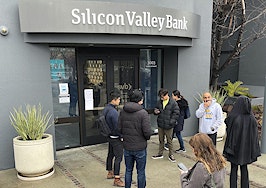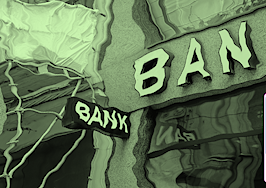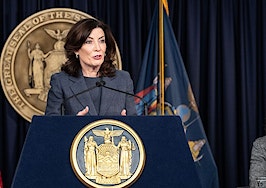In these times, double down — on your skills, on your knowledge, on you. Join us Aug. 8-10 at Inman Connect Las Vegas to lean into the shift and learn from the best. Get your ticket now for the best price.
The House Financial Services Committee is slated to hold a hearing on the SVB and Signature Bank failures on March 29. The bank failures were sudden and unexpected. Many were concerned that they could cause a ripple effect of similar bank failures.
What happened?
Silicon Valley Bank provided business banking services to almost half of the tech and healthcare VC-backed startups in the United States. They invested heavily into 10-year treasure notes at under 2 percent. As interest rates increased, the value of the T-bills decreased and SVB could no longer cover their deposits.
Word spread in the VC community and a Depression-era “run on the bank” began on March 9. Federal regulators put the bank into receivership on March 10 and SVB was no more.
Who is at fault?
Silicon Valley Bank executives are ultimately at fault, but federal regulators also carry much of the blame. The Fed’s own stress tests did not take into account the environment of rising interest rates that they created. Because of this, no federal regulators were aware of the high-risk scenario that SVB put themselves in and the public wasn’t warned.
Why does it matter?
The FDIC insures up to $250,000 per depositor and most businesses hold much larger deposits as a normal course of business. These businesses assumed that their money was safe because the banks they deposited with were subject to strict federal regulations. As SVB failed, the companies who banked with them risked losing their deposits in the long term and risked missing payroll and other bills in the short term. The “ripple effect” or “contagion” could have caused a banking crisis through a “crisis of confidence.”
What happens on March 29?
More than likely, there will be much hand-wringing and blame-casting. SVB issued bonuses just before the collapse and executives sold stock before key reports and also just before the collapse. Federal regulators missed a glaring deficiency in SVB’s own investment portfolio.
As per usual, the American taxpayer stepped in to avoid a catastrophe. We’ll see legislators lambast those who were at fault and throw blame at those on the other side of the aisle. Additional banking regulation is not popular in either party, so we’re unlikely to see much reform, and even less likely to see meaningful reform.
Is this Bear Stearns and the start of GFC 2.0?
The comparisons to the 2008 financial crisis are warranted as we weather a recession and watch banks collapse. The comparisons end at the surface, though. The 2008 financial crisis was caused by years of bad mortgage lending, which took the massive TARP effort and years to “wash the bad loans out.”
There are most certainly more banks that have too-risky investment portfolios and the increasing interest rates will expose those risks. There will likely be more banks that fail or who are bailed out, however, the investments the banks have made are largely in more stable vehicles like 10-year treasury notes.
What does this mean for real estate?
Surprisingly, this could be good for mortgage rates, which is good for real estate. The shaky banking environment means the Fed is less likely to continue hawkishly increasing rates and is more likely to lower rates sooner than if the SVB collapse hadn’t happened.
The risky environment also causes investors to seek safety, which drives down bonds, which drives down mortgage rates. While this doesn’t mean that the market will bounce back quickly and strongly, it does mean that we could see a recovery sooner than we would have had we continued at the trajectory we were on pre-March 10.
The long-term effect of the banking collapse and the Fed backing off of interest rate hikes is up for debate, but it’s likely that we’ll see less controlled inflation. We’re currently on a path to curb inflation, but if the Fed backs off of rate hikes and begins lowering interest rates, we’ll see inflation creep back.
This is another indication that the US economy is “addicted to low-interest rates” and it’s a strong indicator that breaking that addiction will be very difficult, if not impossible.
Eric Bramlett is the owner of Bramlett Residential, a mid-sized real estate brokerage in Austin, Texas. Connect with him on Instagram and LinkedIn.













